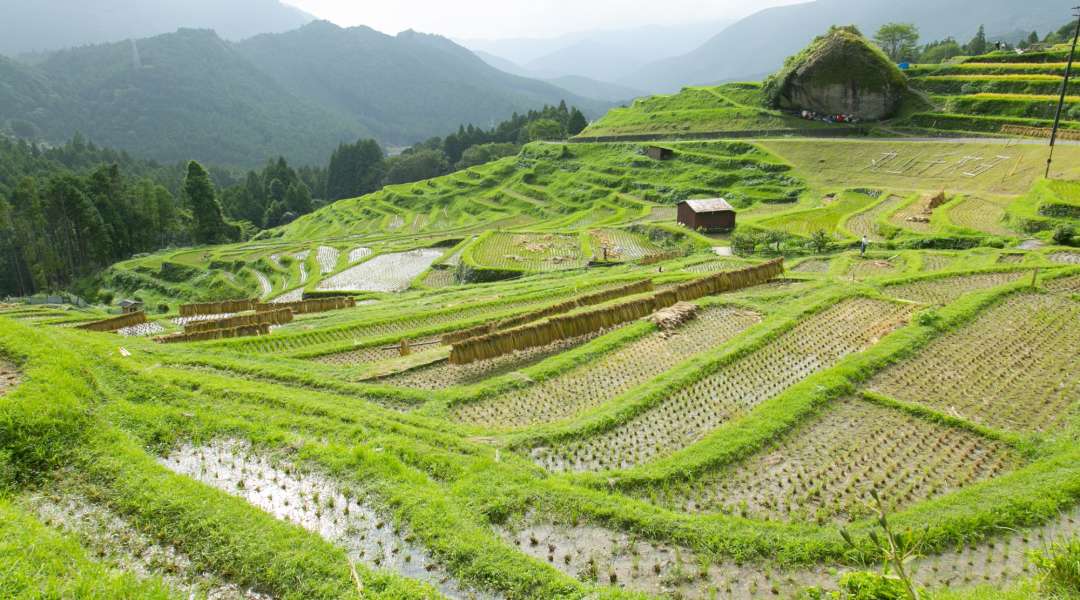
The Kii Peninsula south of Osaka and Nagoya is a treasure trove of sacred places waiting to be discovered in the steep mountains and dense forests of its remote interior, along the majestic coast lines and in secluded bays.
Three prefectures – Wakayama, Nara and Mie – share the spacious land of the peninsula, and since 2004 they also share a UNESCO Site: “Sacred Sites and Pilgrimage Routes in the Kii Mountain Ranges”!
It is not all serious travel though; there are some fun places ideal for family trips too.
We talked to Alena Eckelmann of Kii Monogatari about the still unknown area of southern Mie and asked for her top trip recommendations. Alena has been living in Hongu, a small town in the southern part of the Kii Peninsula for over ten years now and you can find our interview with her here.
From this article you will learn everything about exploring Mie by train and car, and discover what are the best off the beaten path pilgrimage routes in the area. Don’t forget to read the second part where Alena introduces her other picks in Mie including a fun waterfall stay and a secluded onsen with an underground trolley train!

Traversing Mie by Train and Car
There is no airport in Mie and the Tokaido Shinkansen passes by this prefecture. The best way to travel for maximal freedom is by rent-a-car, although access by express train from Nagoya is also an interesting option.
Catch the Limited Express “Nanki Wide View” bound for Shingu and Kii-Katsuura which takes you to southern Mie in 3 hours and 30 minutes. You will pass through some landmarks and you can enjoy panoramic scenery from the extra-large train windows - a must for train aficionados.

Leaving Nagoya terminal, the train will pass through Yokkaichi, whose night time industrial landscape in now a photographers’ dream, then travel through Suzuka, famous for Japan’s F1 race course, and reach Tsu, the prefecture’s capital.
The next stop is Matsusaka, famous for wagyu Japanese high-quality beef. Matsusaka is also a transfer station for catching a local train bound for the Ise Peninsula to reach the Ise Jingu Shrine, the well-known pearl fishing place of Toba and scenic Ago Bay.
The train then passes through lush and leafy Owase, a place known for the second-highest amount of rainfall in Japan, before it reaches Kumano City where we get off the train and start our exploration.
Just make sure to keep your eyes peeled - the scenery slowly changes from urbanised and industrial landscapes to rural pastures and mountain ranges on one side of the rail track, with hidden bays, fishermen villages and the Pacific Ocean on the other side.

If you choose to drive, then you will likely follow National Road 42, which starts at the Ise Peninsula and winds its way south alongside the rail track on a small patch of land between the mountains and the ocean. The faster drive alternative is the Ise Expressway followed by the Kisei Expressway which takes you all the way to Owase.
Several rent-a-car companies operate here. You could rent a car at Chubu Airport near Nagoya City, from Nagoya Station and also at major train stations where the Nanki Wide View Express Train stops, including Tsu and Matsusaka. You don't have to drop the car off where you started, either. You can return the car in Shingu or Kii-Katsuura, or alternatively drive all around the southern top of the Kii Peninsula and return the car at Kansai International Airport, at Shin-Osaka Station or at Kyoto Station.

Pilgrimage Path Less Travelled
Along these modern avenues of access runs an ancient footpath known as Kumano Kodo Iseji. The Iseji is a 170 km long pilgrimage trail that follows the east coast of the Kii Peninsula through Mie Prefecture and it connects the Ise Jingu with the Kumano Sanzan.
While other routes of the Kumano Kodo have become very popular in recent years, the Iseiji is still less traversed. Walking the full length of the Iseji might take anything between 10 days and half a month but there are some shorter trail options in the vicinity of Kumano City that are real highlights.

The trail across Matsumoto-toge Pass is easily accessible from Kumanoshi Station (get off the Nanki Wide View here). This section of the Kumano Kodo is famous for its 300 year old stone pavement and with less than 5 five kilometres in length, it is an easy day hike.
Alternatively, walk the 5 km scenic walk (2.5 h) across Tori-toge Pass to reach the Maruyama Senmaida, the “1,000 rice paddies of Maruyama”. If you don’t drive, you can take a local bus in Kumano City bound for Onsen Hotel Seiryuso, and get off at the Senmaida Tori-toge-iriguchi bus stop.
Spring and autumn are the best seasons for walking the Iseiji but the southern part in the Kumano City area is accessible all year-round as the weather is mild and snow is rare. However, beware of heavy rainfall throughout the year!

Make sure to read the second part of the article where Alena will introduce an incredible beach, a fun waterfall stay for the whole family, rice terraces we can’t get enough of, and a secluded onsen with a secret!

















































